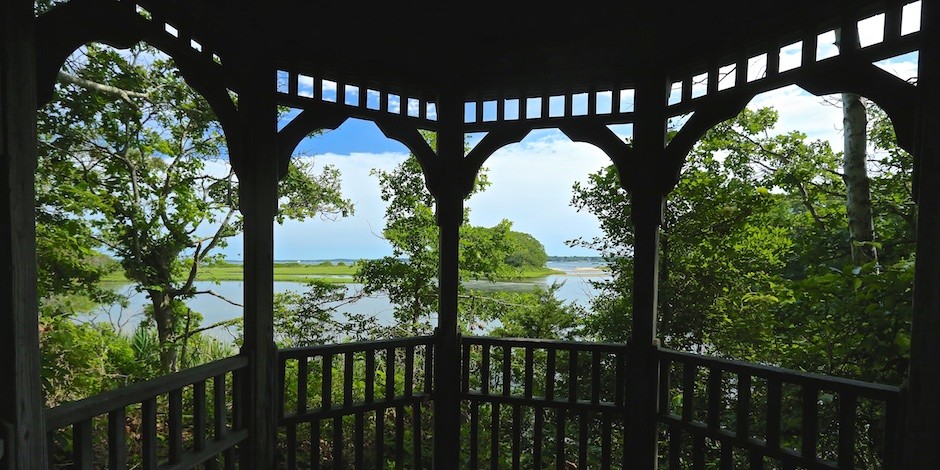
The Nature Conservancy’s MASHOMACK PRESERVE
~~~~~~~~~~~~~~~~~~~~~~~~~~~~~~~~~~~~~~~~
The Nature Conservancy acquired 2,039 acres on Shelter Island in 1980. Known as the Mashomack Preserve, it encompasses diverse habitats necessary for the survival of many species of plants and animals. Edged by 10 miles of sandy coastline, Mashomack is an area of magnificent beauty. Its combination of interlacing tidal creeks, woodlands, fields and coastline makes it a superb wildlife habitat.
The extensive salt marshes of Mashomack are ecologically significant as the breeding ground and nursery for the smallest links in the marine chain of life.
The Pine Swamp complex at the eastern edge of the preserve has been designated a freshwater wetland of “unique local importance” by the New York State Department of Environmental Conservation.
Fourteen hundred acres of upland oak and beech forest are now being allowed to return to an old-growth forest, a habitat rare in the northeast. Meadows provide another contrasting habitat.
The Nature Conservancy’s mission at Mashomack Preserve is to maintain its full array of natural communities and species, and to restore to health those that have been disturbed by human action.
The Harman Hawkins Visitor Center provides interpretive exhibits, information and a small selection of nature gifts. Staff and volunteers are on hand to provide guidance and to answer questions daily during the summer and on weekends during the remainder of the year.
Mashomack also offers nature programs and guided hikes throughout the year. Call the Preserve office at 631.749.1001 for information and reservations.
————————–

Visiting Mashomack Preserve
The Preserve is normally open 9 AM to 4 PM October through February and from 9 AM to 5 PM March through September. The Preserve is closed on Tuesdays except in July and August when it is open 7 days/week. In January, the Preserve is open only on the weekends.
~~~~~~~~~~~~~~~~~~~~~~~~~~~~~~~~~~~~~~~~~~~~
THE NATURE CONSERVANCY
The mission of The Nature Conservancy is to preserve plants, animals, and natural communities that represent the diversity of life on Earth by protecting the lands and water they need to survive.
Thanks to the support of more than 1 million members, The Nature Conservancy has a tremendous record of success since its founding in 1951:
- The Nature Conservancy has protected more than 119 million acres of land and 5,000 miles of rivers worldwide, and it operates more than 100 marine conservation projects globally.
- The Nature Conservancy works in all 50 states and more than 30 countries — protecting habitats from grasslands to coral reefs, from Australia to Alaska to Zambia.
- The Nature Conservancy addresses threats to conservation involving climate change, fresh water, oceans, and conservation lands.
——————————–
Content courtesy of The Nature Conservancy.
www.nature.org
________________________________________________________
